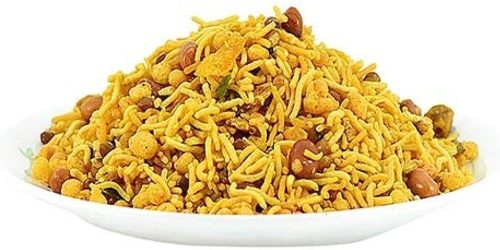Project Report For Namkeen Plant
Introduction
Project Report For Namkeen Plant is as Follows.
A namkeen plant is a facility that manufactures several varieties of savoury snacks known as namkeen. Namkeen is a famous Indian snack category that contains a variety of crispy, spicy, and sour nibbles that are eaten as tea accompaniments or on their own. A namkeen facility is often divided into sections or divisions that handle various phases of the manufacturing process. The first stage is acquiring raw materials, which generally include besan (gramme flour), spices, oils, and flavourings. To assure quality and consistency, these products are purchased from reputable vendors.
Once received, raw materials are properly examined and kept in proper conditions to guarantee freshness and shelf life. The production process begins with the mixing and blending of predefined amounts of components to obtain the desired flavours and textures. Depending on the type of namkeen being manufactured, this mixture is subsequently processed by specialised devices such as dough kneaders, extruders, fryers, and ovens.
The namkeen factory also has packaging sections where the snacks are put into various sizes and types of containers. The namkeen is sealed throughout the packing process to keep it fresh, prevent it from moisture, and extend its shelf life. The packaging also include labels and branding information. Quality control is critical in a namkeen manufacturing. Quality tests are performed on a regular basis at various stages of manufacturing to ensure that the snacks satisfy the appropriate flavour, texture, and cleanliness criteria.
Sensory examination, physical testing, and microbiological investigation are all part of this process. Namkeen plants likewise prioritise sanitation and hygiene in order to ensure product quality and safety. Adequate efforts are made to maintain a clean and sanitary environment, such as frequent cleaning of the equipment, storage rooms, and manufacturing floors. Employees are educated in food safety practises, and cleanliness regulations are strictly maintained.

Types Of Namkeen Plant
Sev Plant: Sev is a delicious crispy snack prepared with besan (gramme flour) and spices. A sev plant is particularly built to generate several types of sev, such as thick sev, thin sev, nylon sev, and flavoured sev.
Bhujia Plant: Bhujia is another well-known namkeen prepared with besan, spices, and oil. A bhujia plant specialises in the production of several forms of bhujia, such as plain bhujia, aloo bhujia (made with potato), and moong dal bhujia (made with lentils).
Chakli Plant: Chakli, also known as murukku, is a spiral-shaped savoury snack prepared with rice flour, gramme flour, and spices. A chakli plant specialises in making a wide range of chaklis with varying flavours and textures.
Papdi Plant: Papdi, also known as papri, is a crispy and flaky snack prepared with refined flour, spices, and oil. A papdi plant is designed to generate various sizes and shapes of papdis, which are used in popular chaat products such as papdi chaat.
Mixture Plant: A mixture plant concentrates on generating a variety of savoury components such as sev, bhujia, peanuts, cashews, and spices. This combination is frequently seasoned with extra flavours such as chilli, garlic, or curry leaves.
Market Potential Of Namkeen Plant
In the years 2023 and 2027, the Indian namkeen market is anticipated to expand at a CAGR of 8.42%. According to projections, the market will grow by $3,162.26 million.
Several factors influence market growth, including increased retail space in Tier II and Tier III cities in India, altering taste preferences, and a growing appetite for savoury snacks. This study delves further into market segmentation by type (Indian and ethnic snacks vs. western snacks) and distribution channel (offline vs. online). It also contains a thorough examination of the drivers, trends, and difficulties. The research also contains historical market statistics from 2017 to 2021.
The market throughout the projection period is the availability of a diverse variety of replacement goods. There are several Namkeen replacements available. In the Indian market, fried and baked snacks can be substituted for Namkeen. Vendors of these replacements, such as baked snacks, are concentrating on introducing new product types and expanding their product offerings in flavouring and value-added components. Furthermore, baked snacks are growing increasingly popular among health-conscious clients, posing a threat to India’s Namkeen industry.
Project Report Sample On Namkeen Plant
Need Help?
Create 100% Bankable Project Report

